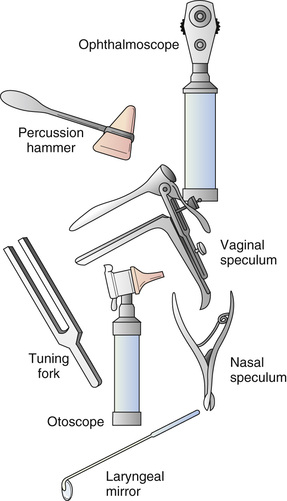Assisting With the Physical Examination
Objectives
• Define the key terms in this chapter.
• Explain what to do before, during, and after an examination (exam).
• Identify the equipment used for an exam.
• Describe how to prepare and drape a person for an exam.
• Explain the rules for assisting with an exam.
• Perform the procedure described in this chapter.
• Explain how to promote PRIDE in the person, the family, and yourself.
Key Terms
Doctors and many registered nurses (RNs) perform physical exams. Exams are done to:
Your Role
Your role depends on agency policies and on what the examiner prefers. You may be asked to:
• Collect needed linens, equipment, and supplies.
• Prepare the room for the exam.
• Cover the exam table with a clean drawsheet or paper.
• Transport the person to and from the exam room.
• Measure vital signs, weight, and height.
• Position and drape the person.
• Hand equipment and supplies to the examiner.
• Discard used supplies and clean equipment.
• Help the person dress or to a comfortable position after the exam.
Equipment
The instruments in Figure 33-1, p. 562 are used in the exam.
• Laryngeal mirror—used to examine the mouth, teeth, and throat.
• Nasal speculum—used to examine the inside of the nose. Speculum means mirror; nasal means nose.
• Ophthalmoscope—a lighted instrument (scope) used to examine the internal eye (ophthalmo) structures.
• Otoscope—a lighted instrument (scope) used to examine the external ear (oto) and the eardrum (tympanic membrane). Some scopes can be changed into an ophthalmoscope.
• Percussion hammer (reflex hammer)—used to tap body parts to test reflexes. Percussion means to strike hard.
• Tuning fork—vibrated to test hearing.
• Vaginal speculum—used to open the vagina (vaginal) to examine it and the cervix. Speculum means mirror.

Some agencies supply exam trays. If not, collect the items listed in the procedure: Preparing the Person for an Examination, p. 563. Arrange them on a tray or table.
 Preparing the Person
Preparing the Person
The physical exam can cause concerns. People may worry about findings. Some are confused or fearful about the procedure. Discomfort, embarrassment, exposure, and not knowing the procedure cause anxiety. Respect the person’s feelings and concerns.
The person must give informed consent for the exam. The nurse explains the exam’s purpose and what to expect. To assist the nurse:
• Screen the person and close the room door.
• Obtain a urine specimen if one is needed. Explain how to collect the specimen (Chapter 34). Label the container.
• Measure vital signs, weight, height, and oxygen concentration (Chapters 29, 32, and 39). Record the measurements on the exam form.
• Drape the person. Use a paper drape, bath blanket, sheet, or drawsheet.
See Focus on Communication: Preparing the Person.
See Focus on Children and Older Persons: Preparing the Person.
See Delegation Guidelines: Preparing the Person.
See Promoting Safety and Comfort: Preparing the Person.
See procedure: Preparing the Person for an Examination.



